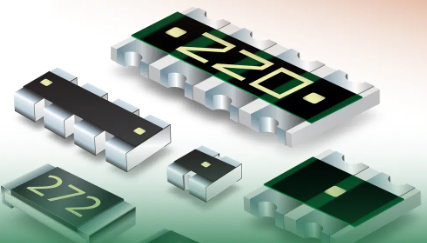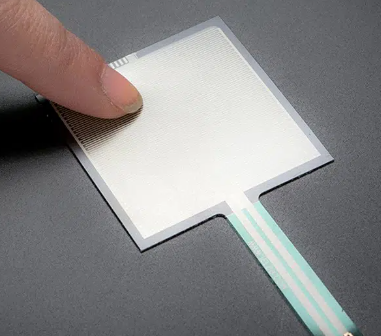What is thin-film resistor Difference between thin-film resistors and thick-film resistors
There are many types of resistors. Thin-film resistors are one of the commonly used ones. What are the types of thin-film resistors? What materials are commonly used to make thin-film resistors? In what fields are thin-film resistors mainly used?

What is thin-film resistor?Thin-film resistors are made by evaporating materials with a certain resistivity on the surface of insulating materials using a similar evaporation method. Generally, the insulating material commonly used for this type of resistor is ceramic substrates.
In recent years, with the rapid development of electronic information technology, the development of A/D, D/A conversion circuits and other linear or nonlinear circuits has been rapid. Among them, high-precision operational amplifiers with thin-film resistor networks as the core and high-precision A/D and D/A conversion circuits are essential. In order to improve the accuracy and resolution of ADCs and DACs, the performance of thin-film resistors must also be improved accordingly.
The accuracy and resolution of DAC and ADC mainly depend on the resistor network inside the device. DAC and ADC conversion devices generally use R-2R ladder resistor network. The analysis, research and production of resistor network performance have always been key technologies in the development and production of analog devices. High-precision thin-film resistors have become more and more popular in high-tech fields such as aviation, national defense, electronic computers, communication instruments, and electronic switches due to their excellent characteristics such as high resistivity, low temperature coefficient of resistance, high stability, no parasitic effects, and low noise.
Features of thin-film resistorsTantalum nitride film
Low parasitic capacitance
Good solderability and bonding performance
Temperature coefficient: 150ppm/℃ (-55℃~+125℃)
Rated power 1000mW
Electrode temperature resistance 400℃×10min
Difference between thin-film resistors and thick-film resistorsThin-film Resistors vs Thick-film Resistors
1. Difference in film thickness: The film thickness of thick-film resistors is generally greater than 10 μm, and the film thickness of thin films is less than 10 μm, mostly less than 1 μm;
2. Difference in the manufacturing process: Thick-film resistors generally use a screen printing process, while thin-film resistors use vacuum evaporation, magnetron sputtering and other process methods. The differences in materials and processes between thick-film resistors and thin-film resistors directly lead to differences in performance between the two resistors. Thick-film resistors generally have poor accuracy, with 10%, 5%, and 1% being common accuracy, while thin-film resistors can achieve 0.01% accuracy of one thousandth, 0.1% accuracy of one thousandth, etc. At the same time, the temperature coefficient of thick-film resistors is difficult to control and is generally larger. Similarly, thin-film resistors can achieve a very low temperature coefficient, so that the resistance value changes very little with temperature and the resistance value is stable and reliable. Therefore, thin-film resistors are commonly used in various types of instruments, medical equipment, power supplies, electrical equipment, electronic digital products, etc.
Common thin-film resistors1. Carbon film resistor
Made by depositing crystallized carbon on a ceramic rod skeleton. Carbon film resistors have low cost, stable performance, wide resistance range, and low-temperature coefficient and voltage coefficient. They are currently the most widely used resistors.
2. Metal film resistor
The alloy material is evaporated on the surface of the ceramic rod skeleton using vacuum evaporation. Metal film resistors have higher accuracy, better stability, noise and temperature coefficient correction than carbon film resistors and are widely used in instrumentation and communication equipment.
3. Metal oxide film
A layer of metal oxide is deposited on the insulating rod. Since it is an oxide itself, it is stable at high temperatures, resistant to thermal shock, and has a strong load capacity.
4. Synthetic film resistor
It is obtained by coating a conductive composite suspension on a substrate, so it is also called paint film resistance. Because its conductive layer has a granular structure, it has high noise and low precision. It is mainly used to manufacture high-voltage, high-resistance, and small resistors.
在线留言询价
- 一周热料
- 紧缺物料秒杀
| 型号 | 品牌 | 询价 |
|---|---|---|
| RB751G-40T2R | ROHM Semiconductor | |
| MC33074DR2G | onsemi | |
| BD71847AMWV-E2 | ROHM Semiconductor | |
| TL431ACLPR | Texas Instruments | |
| CDZVT2R20B | ROHM Semiconductor |
| 型号 | 品牌 | 抢购 |
|---|---|---|
| BU33JA2MNVX-CTL | ROHM Semiconductor | |
| STM32F429IGT6 | STMicroelectronics | |
| IPZ40N04S5L4R8ATMA1 | Infineon Technologies | |
| BP3621 | ROHM Semiconductor | |
| TPS63050YFFR | Texas Instruments | |
| ESR03EZPJ151 | ROHM Semiconductor |
- 周排行榜
- 月排行榜
AMEYA360公众号二维码
识别二维码,即可关注


请输入下方图片中的验证码:
























